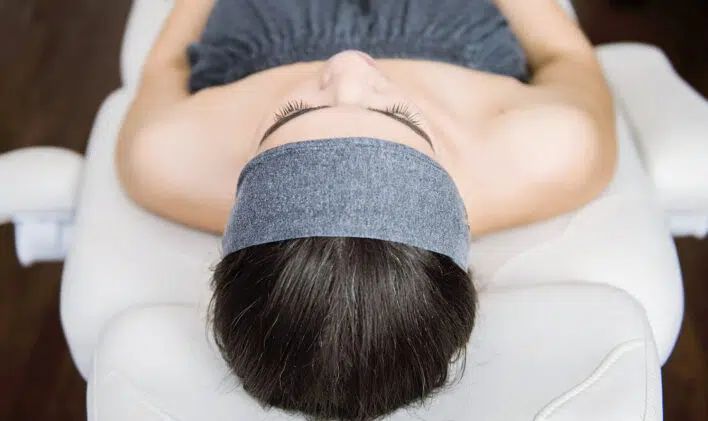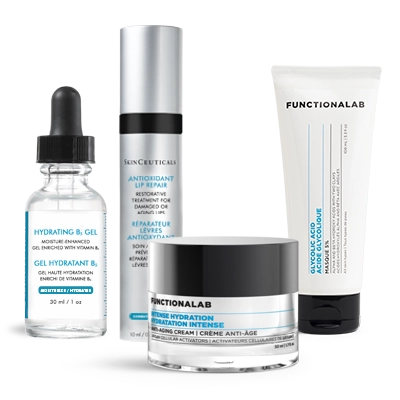Available in your clinic
Not available in your clinic
Face treatments
Body treatments
Treatment
Available in your clinic
Not available in your clinic

During the ablation of varicose veins by endovenous laser, a laser beam is placed inside the diseased vein in a minimally invasive manner. The vein is treated directly by the energy transmitted by the laser light to the internal venous wall which is heated and then destroyed. The vein undergoes fibrosis, and then disappears over time. This treatment, now considered worldwide as the gold standard to treatment of saphenous vein, lasts about 30 minutes, does not require general anesthesia and allows a quick resumption of activities.
The greater saphenous vein which runs from the groin, along the inside of the leg to the ankle, and the small saphenous vein which runs from the back of the knee to the ankle are best treated with endovenous laser. While they are too deep to be seen with the naked eye, when diseased, they are often the source of many varicose veins at the surface of the skin. Success of varicose vein treatment depends on accurate ultrasound assessment and treating the source of the problem first.
A meeting with our specialist physician prior to treatment will address your needs and concerns and determine the most appropriate solution for treating your varicose veins.
Local anesthesia is applied to be treated to make the procedure more comfortable. Indeed, a small puncture of the vein to be treated is carried out in order to introduce the fiber used there. The laser then destroys the varicose vein, which will fibrose and eventually completely disappear. The incision made to introduce the fiber is then closed using a simple adhesive bandage. It is recommended to wear compression stockings during the first 24 hours after the intervention, then only during the day over a period of two weeks. The appearance of a few painless bruises on the treated area is possible and completely normal. Patients can resume work within 2 days of treatment as long as heavy lifting is avoided. Physical activities may be resumed approximately 15 days after the intervention, after the doctor’s advice. Assessment of the treated vein will be done within 3 days of the procedure and sclerotherapy will be commenced to eliminate the diseased veins that were being fed by the lasered vein.
One leg $3,200
Both legs $5,400 (same day treatment)
Endovenous laser treatment can be complemented by other types of intervention, however no further treatment is required.
Certain conditions prevent Endovenous laser treatment, such as varicose veins that are too tortuous or very superficial.

Shop our products for an enhanced beauty routine!
Endovenous laser treatment offers a way to treat varicose veins without surgery. A laser beam is placed inside the vein with a small puncture. The heat from the energy beam shrinks and destroys the varicose vein, causing fibrosis, or scar tissue, which disappears over time.
This is a minimally invasive option because it does not require surgery. Instead, endovenous laser treatment involves a small puncture to reach the inside of the varicose vein. A treatment session typically lasts less than an hour.
We will apply local anesthesia to make the treatment more comfortable. A brief period of downtime is to be expected, but it is usually possible to return to work after two days as long as you continue avoiding heavy lifting. Physical activities should be avoided for 15 days post-treatment.
Endovenous laser treatment is suitable for varicose veins on the legs, ankles, and feet. To ensure precision and optimal results, your physician will conduct an ultrasound assessment. This will help gain the complete picture and understand the source of the problem before beginning the procedure.
Welcome! ReNue clinic is now Dermapure!
Our commitment remains unwavering. Same clinics, doctors, and staff. Step in with confidence; your well-being is our constant dedication
Welcome! Rosenthal Clinic is now
Dermapure Victoria
Our commitment remains unwavering. Same clinics, doctors, and staff. Step in with confidence; your well-being is our constant dedication
Welcome! Skinposible is now
Dermapure Calgary Chaparral
Our commitment remains unwavering. Same clinics, doctors, and staff. Step in with confidence; your well-being is our constant dedication
Welcome! Viva Medical Aesthetics is now
Dermapure Cowichan!
Our commitment remains unwavering. Same clinics, doctors, and staff. Step in with confidence; your well-being is our constant dedication
Welcome! Dr. Boulous Medical Spa is now
Dermapure Newmarket!
Our commitment remains unwavering. Same clinics, doctors, and staff. Step in with confidence; your well-being is our constant dedication
Welcome! Peause is now
Dermapure Longueuil-sur-le-parc
Our commitment remains unwavering. Same clinics, doctors, and staff. Step in with confidence; your well-being is our constant dedication
Welcome! Bellissima Medical is now
Dermapure Dieppe!
Our commitment remains unwavering. Same clinics, doctors, and staff. Step in with confidence; your well-being is our constant dedication
Welcome! RevitalizeMD is now
Dermapure West Edmonton!
Our commitment remains unwavering. Same clinics, doctors, and staff. Step in with confidence; your well-being is our constant dedication